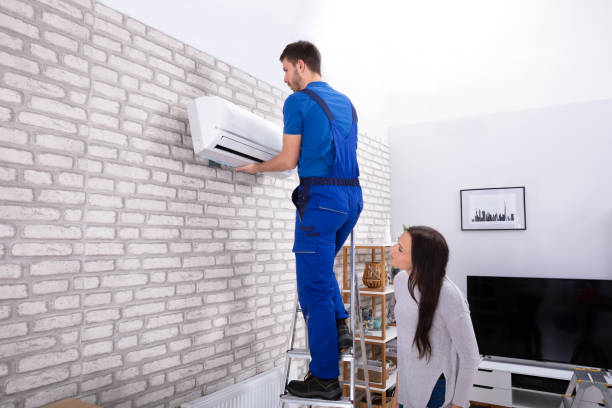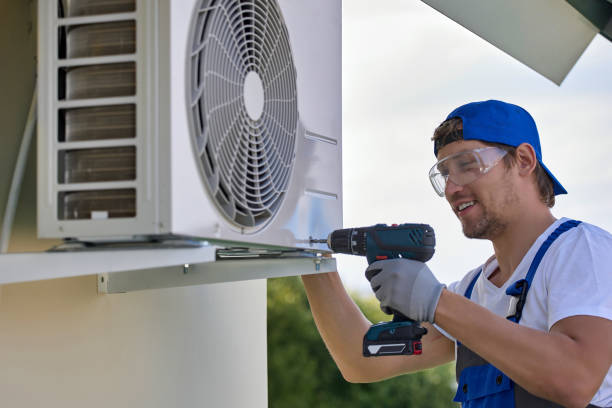
Installing an air conditioning system is a significant investment, and ensuring it's done correctly is crucial for optimal performance and longevity. However, many homeowners and even some professionals make common mistakes during the installation process, leading to inefficiency, increased energy costs, and potential breakdowns. In this blog post, we'll discuss some of the most prevalent AC installation mistakes to avoid, along with tips on how to ensure a smooth and successful installation.
Improper Sizing
One of the most critical factors in air conditioning installation is proper sizing. Installing an air conditioner that is too small for the space it's intended to cool will result in inadequate cooling and constant strain on the system, leading to premature wear and higher energy bills. Conversely, installing an oversized unit can lead to short cycling, uneven cooling, and excess humidity in the air.
To avoid this mistake, it's essential to perform a thorough load calculation based on factors such as the size of the space, insulation levels, number of occupants, and local climate. Working with a qualified HVAC professional can help ensure that you choose the right size unit for your specific needs.
Poor Placement
Where you install your air conditioner can have a significant impact on its performance and efficiency. Placing the outdoor unit in direct sunlight or near sources of heat, such as a dryer vent or grill, can cause the system to overheat and struggle to cool your home effectively. Additionally, placing the indoor unit in a cramped or obstructed space can impede airflow and reduce efficiency.
When choosing the location for your AC unit, aim for a shaded area away from direct sunlight and heat sources. The outdoor unit should also be placed on a stable surface, such as a concrete pad, to ensure proper airflow and minimize vibration. Inside, the unit should be installed in a central location with plenty of clearance around all sides for optimal performance.
Incorrect Refrigerant Charge
Proper refrigerant levels are essential for the efficient operation of your air conditioning system. Ensuring proper refrigerant levels can improve air quality of AC.Overcharging or undercharging the system can lead to reduced cooling capacity, increased energy consumption, and potential damage to the compressor.
During installation, it's crucial to accurately measure and charge the refrigerant according to the manufacturer's specifications. This often requires specialized equipment and training, so it's best to leave this task to a qualified HVAC technician. Additionally, be wary of contractors who offer to top off the refrigerant without first diagnosing and fixing any leaks, as this is only a temporary solution that can lead to more significant problems down the line.
Neglecting Air Ducts

The ductwork plays a critical role in delivering conditioned air to your home's living spaces. However, many homeowners overlook the importance of properly sealing and insulating their ducts, leading to air leaks, reduced airflow, and wasted energy.
Before installing a new air conditioning system, it's essential to inspect the existing ductwork for any leaks, gaps, or damage. Sealing these areas with mastic or foil tape and insulating the ducts in unconditioned spaces, such as the attic or crawlspace, can help improve efficiency and reduce energy costs. Understanding the role of insulation in cooling efficiency is crucial here. Additionally, make sure the ducts are properly sized and configured to deliver adequate airflow to each room in your home.
Skipping Professional Installation
While DIY projects can be satisfying, installing an air conditioning system is not a task for the inexperienced. Improper installation can void the manufacturer's warranty, compromise performance and efficiency, and even pose safety risks.
Hiring a licensed and experienced HVAC contractor is the best way to ensure that your air conditioning system is installed correctly and up to code. A professional installer will have the necessary skills, tools, and knowledge to size and install the system properly, troubleshoot any issues, and provide ongoing maintenance to keep it running smoothly for years to come.
Conclusion
Avoiding these common AC installation mistakes can help ensure that your air conditioning system operates efficiently, effectively, and reliably for years to come. By investing in proper sizing, placement, refrigerant charging, ductwork, and professional installation, you can enjoy cool comfort in your home while minimizing energy costs and reducing the risk of breakdowns. If you're considering installing a new air conditioning system, be sure to do your research, ask questions, and work with a qualified HVAC contractor to ensure a successful installation process.